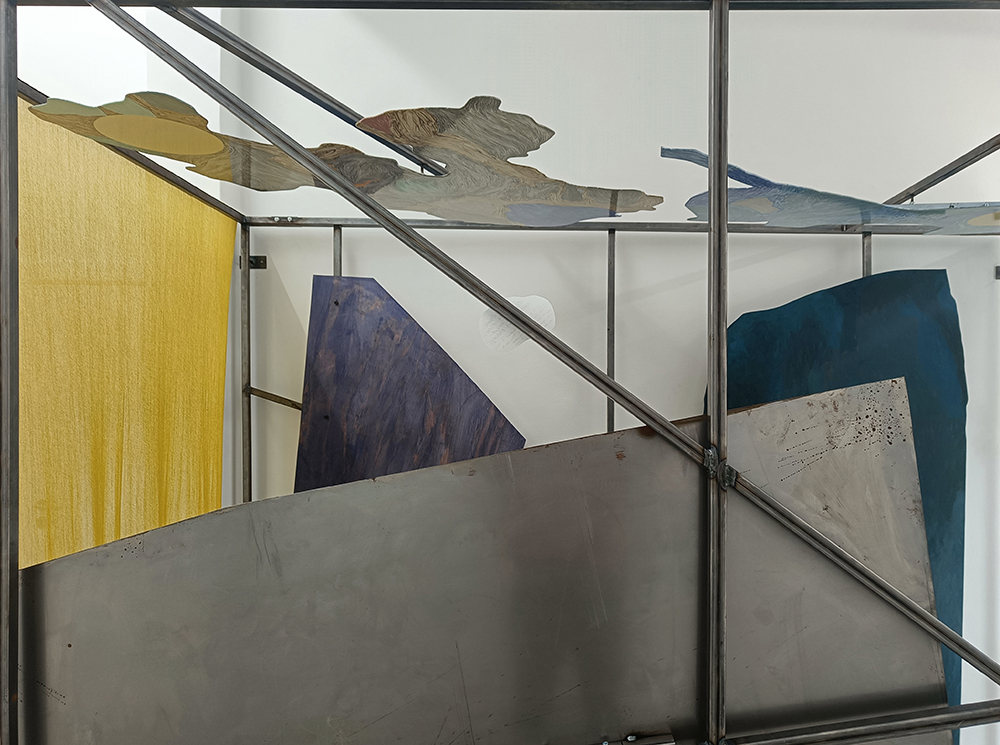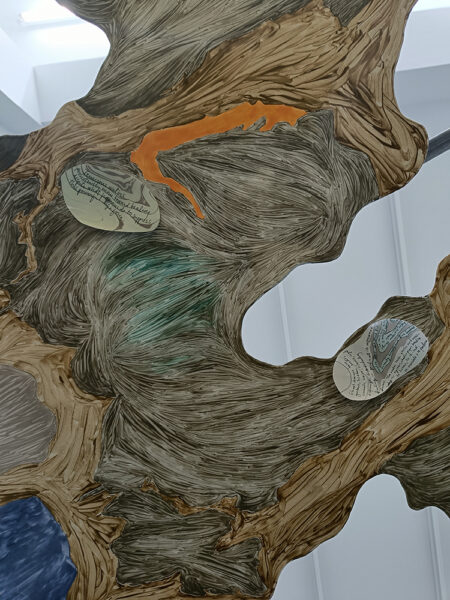GRIEF SHRINE OF GROWTH — TWO MOONS
The Shrine is designed as a container of the Climate Thanatology Project arranged by the gallery and curatorial platform 68 art institute and exhibited at Sharp Project. The Climate Thanatology Project is an international laboratory for collaborative climate art developed in the U.S. and Scandinavia.
The shrine is thought as a passage for grief to let go of the world as we know it; a transitional space, a mini terraforming of earthly infrastructures. It shows an embodied mapping of critical water zones: the Great Salt Lake in Utah, which is drying up, and Kalveboderne in Copenhagen, which is in risk of flooding. Vertically it is composed as a vault of floating silhouettes of the two water bodies, a two folded sky with two moons making ebb and flow one, connecting tides and temporalities. Inspired by Freuds idea of removing the desire of something lost by reinventing it in something else the project translates sorrow into other forms of energy, which is synthesized in the shrine using sound and writing. Music-thanatologist Catherine Delong playing harp to help people encounter the dying process as a natural passage, has here turned her practise into an eco-thanatology playing for the quickly disappearing Great Salt Lake on site. Her sound piece has been remixed by UK musicduo Silo Portem with sounds from the acoustic instrument Resonant Bodies made of an old ash three by artist Julia Adzuki. Inspired by the Japanese Ema shrine, in which Shinto worshippers write wishes for the future, written texts about hope, fear, memories, and reflections about the loss of the world as we know it, by participants in ‘Death Cafés’ held in Utah, New York and Copenhagen, are planted into the shrine by magnets. The notes are written on Suminaga-shi paper leaves made with water from each event location by artist Lana Neilson.
Its materiality is composed of contrasting inherent timespans: Eel grass, a natural non-toxic C02 storing material which compost naturally, iron which rusts soon based on atmospheric factors like humidity and sunlight, and enamel, which does not rust, is very durable, resistant to chemical attack, graffiti, UV light, and is tactile safe, as it does not absorb bacteria or attracts dust. As well as tulle used in a more symbolic way with reference to the Victorian mourning shawl tradition to give physical space for grief, protect against negative thoughts and inspire positive thinking. Originally dyed black to create distance but in the shrine used as colored curtains to frame a togethering. Inspiration is drawn from the Mexican aromatic mourning shawl ‘rebozo de luto’ as well, which has scent impregnated in its fibers; smokes of herbs like rosemary, moss woven into the garment, threads soaked in lily water or cacao juice, connecting memory and scent, life and death. In the shrine the eel gras adds in a similar way a mild odeur of salted hay to the installation.
Back to front



























